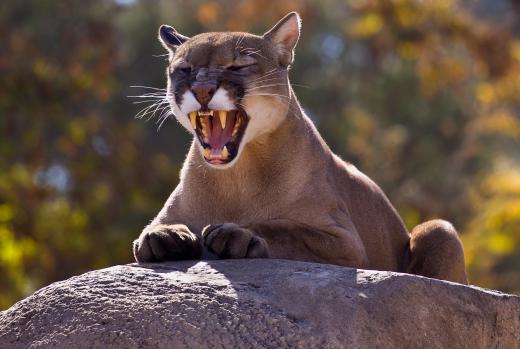What is the Great American Interchange?
 Michael Anissimov
Michael Anissimov
The Great American Interchange may sound like some sort of freeway, but it's actually a paleozoogeographic event that occurred in the Americas about 3 million years ago, during the Pliocene epoch. The Great American Interchange was caused when volcanic activity created the Isthmus of Panama, linking together North and South America, which had been separated for 200 million years, since the breakup of the supercontinent Pangaea. Numerous mammals, part of lineages which had been separated for eons, were exchanged between the continents, which thereafter became part of the same general biogeographical region, the Americas.
The mammalian fauna of North America prior to the Great American Interchange were in general boreoeutherian, a clade composed of sister taxa Laurasiatheria and Euarchontoglires, which encompasses the New World primates, lagomorphs (pikas, rabbits, hares), rodents (rats and mice), moles, shrews, gophers, ancient horses, deer, the now-extinct American Camel, skunks, bears, saber-tooth cats, wolves, foxes, cougars, American Lion, and others. The South American fauna was more unique to just that continent, including marsupials (with some carnivorous variants), xenarthrans (armadillos, anteaters and sloths, including giant ground sloths), porcupines, Vampire Bats, the Dire Wolf, "Terror Birds," numerous native ungulates (hoofed animals) including the peculiar Macrauchenia, which is described as a humpless camel, low in stature with a short trunk.

In general, if the Great American Interchange is seen as a sort of evolutionary competition, North America won. The North American fauna, living in a somewhat harsher, colder, and more climate-diverse continent, had adaptations better suited to competition than the South American fauna, much of which was heavily adapted to rainforest and made it no further than Central America. An exception are the notorious Terror Birds, which made it as far as Texas and Florida, presumably consuming millions of small mammals along the way with their huge, razor-sharp beaks. Yet this success was short-lived, as the Terror Birds went extinct within a million years of making the journey.

Some examples of animals that successfully made exploited the Great American Interchange and survive to this day include the armadillo, found most often in Texas, the Virginia Opossum, the only marsupial found north of the Rio Grande, porcupines, the Vampire Bat, found in Mexico, the cougar, and the King Vulture, which can be found throughout Central America.
AS FEATURED ON:
AS FEATURED ON:













Discussion Comments
@Proxy414
It is also possible that numerous of these species discovered the isthmus at different times. They had plenty of time to multiply and discover new territory, and I doubt they all suddenly rushed toward the isthmus at the same time.
The Panama canal is drawn across a small space over which hundreds of species are said to have crossed in this great interchange. It is likely that fossils found in this area during the digging confirmed evidence of the new predatory opportunities which presented themselves after the conjoining of the two continents. Species from all over two large continents converged on a small isthmus over time.
Sometimes I wonder how animals got to places which would be inaccessible due to water. Pangaea is a good explanation, but still it is incomplete. Certain species were obviously brought by humans as we spread across the world on boats. These species affected the diets and customs of tribes around the world, as well as the theriomorphic gods they worshiped.
Throughout evolutionary history, numerous animals have had geographical splits in their evolution and have subsequently been reunited as different species. This is also the case with the cichlids of Lake Malawi in Africa. Over time, the lake became three lakes, allowing for separate evolution of different main species. When the water level rose again after thousands of years, the fish were reintroduced as separate forms. This is why there is such beautiful diversity in African cichlids, and many prefer them as pet fish.
Post your comments